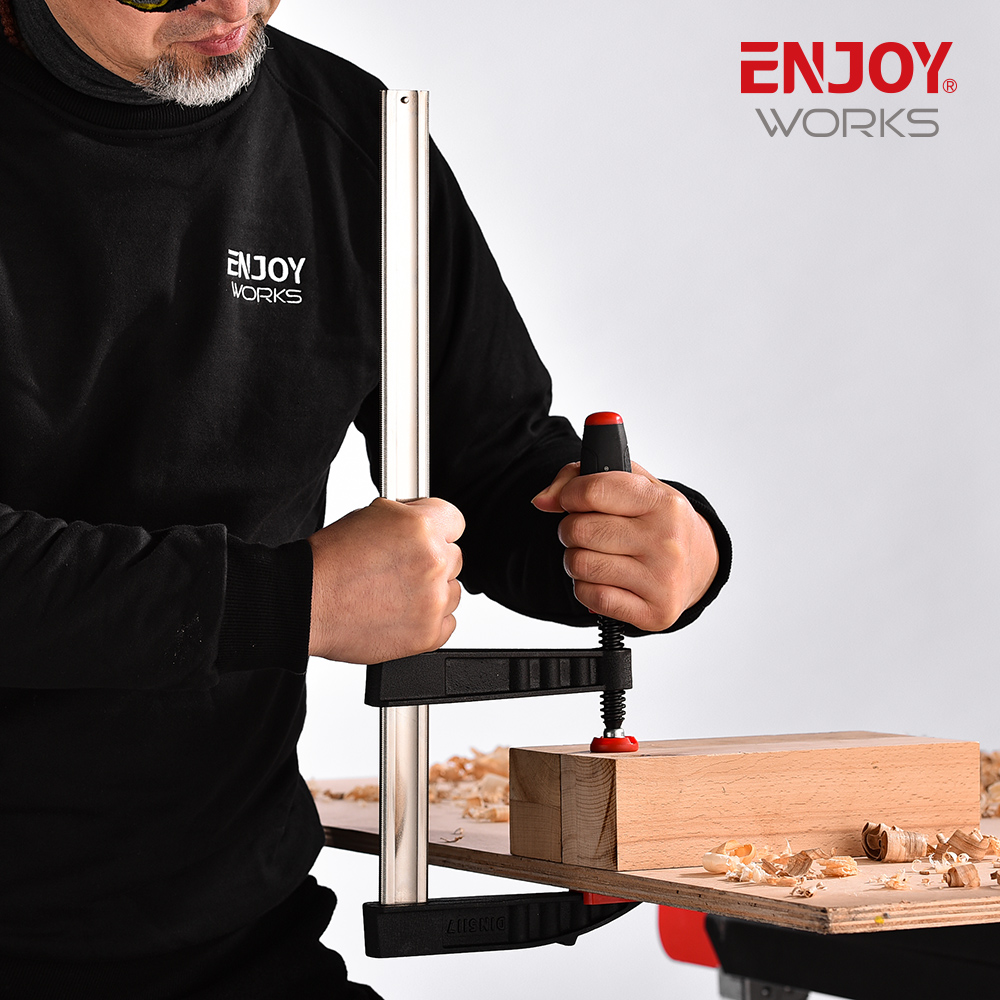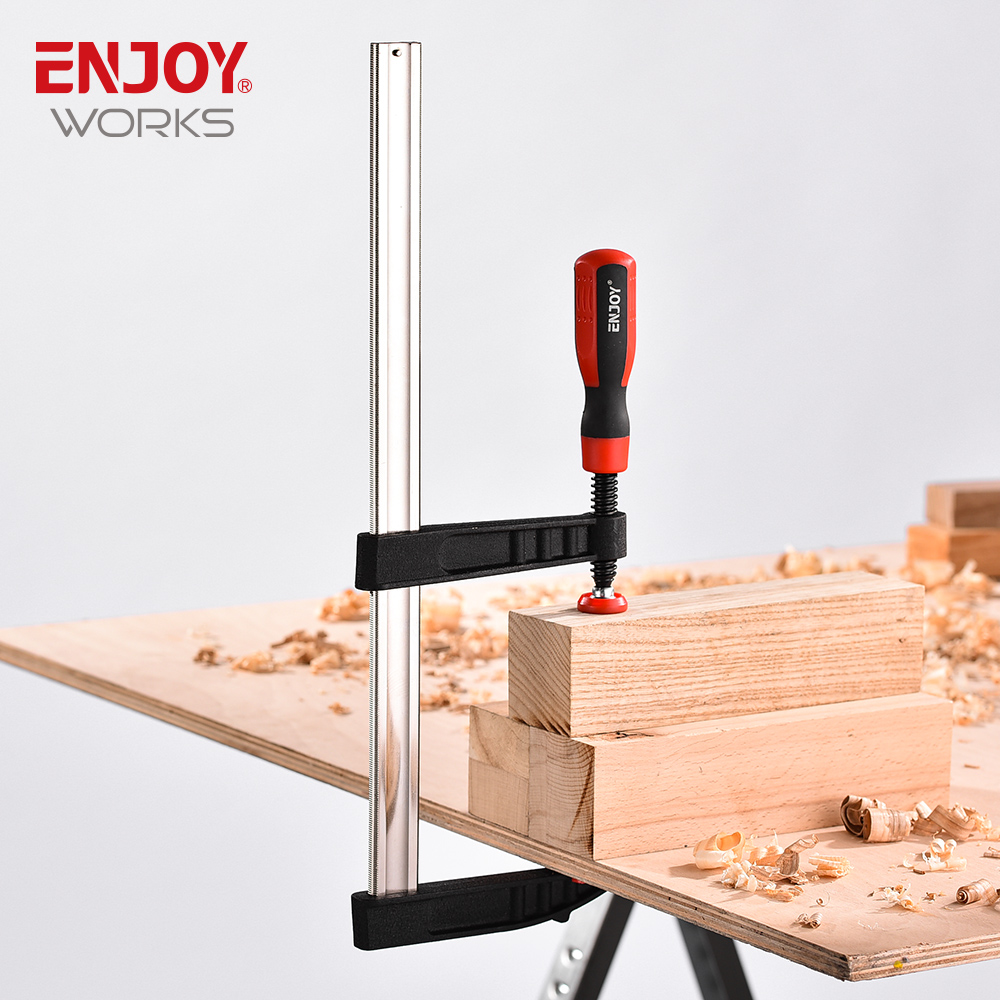Views: 0 Author: Site Editor Publish Time: 2024-10-27 Origin: Site








Woodworking involves various tools to ensure precision, and clamps are essential for securing materials while cutting, gluing, or assembling. Pipe clamps and bar clamps are two of the most common types used by woodworkers. However, understanding their differences can help you choose the right tool for your specific project. This article will provide a comprehensive comparison between pipe clamps and bar clamps, helping you understand their features, uses, and key distinctions.
The main difference between a pipe clamp and a bar clamp lies in their construction and flexibility. A pipe clamp uses a pipe as its backbone, allowing for adjustability in length, while a bar clamp features a fixed-length bar, offering greater stability and ease of use. Both are useful for woodworking, but each has its strengths, depending on the project's requirements. Below, we will dive deeper into their differences to help you make an informed decision.

Pipe Clamps: Pipe clamps are designed with a cylindrical pipe as the central structure. This pipe, usually made of metal, serves as the main support. The clamp consists of two jaws: one that is fixed and another that can be moved along the pipe. The length of the pipe determines the maximum capacity of the clamp. Because pipes come in different sizes, typically 3/4 inch or 1/2 inch, you can choose the appropriate pipe size based on the material's thickness or project size. A key feature of pipe clamps is that you can change the pipe to adjust the clamp's length, giving you versatility when working on larger projects.
In addition, pipe clamps are heavy-duty and often used for larger woodworking projects, such as assembling furniture, doors, or cabinets. The heavy-duty construction and strength of the pipe make it ideal for jobs requiring significant clamping pressure.
Bar Clamps: Bar clamps, on the other hand, feature a flat bar as the backbone, which can be made of steel or aluminum. The bar is fixed in length, and like pipe clamps, bar clamps also feature two jaws: one fixed and one adjustable. However, bar clamps offer a smoother sliding mechanism along the bar, allowing quick and easy adjustments. They are commonly used for smaller woodworking tasks, including assembling frames, picture frames, or panel work, where precise alignment is critical.
The key advantage of bar clamps is their lightweight structure and ease of use. Unlike pipe clamps, bar clamps do not require changing out pipes for different lengths. However, the fixed-length design limits their versatility when dealing with larger workpieces.

Pipe Clamps: Pipe clamps are highly versatile due to their interchangeable pipes. You can easily swap out different pipe lengths, making them ideal for a wide range of projects. Whether you're working on something small or large, having a collection of various pipe sizes (3/4 inch or 1/2 inch) allows you to tailor the clamp to your specific needs. This flexibility makes pipe clamps perfect for large projects such as tabletops or cabinets, where extra length and strength are crucial.
One downside of pipe clamps is their weight. The heavy-duty nature of these clamps, while useful for high-pressure clamping, can make them bulky and harder to maneuver during smaller, more delicate projects.
Bar Clamps: Bar clamps excel in situations where you need precise, moderate clamping force. Their fixed bar length limits versatility compared to pipe clamps, but they are lighter and easier to handle. They’re commonly used in tasks where precise, even pressure is required across a smaller surface area, such as when building boxes or joining frames.
Bar clamps are also known for their ease of use. They feature quick-release mechanisms that allow for rapid adjustments, making them more convenient than pipe clamps when working on projects that require frequent repositioning or fine-tuning.
Pipe Clamps: Pipe clamps are renowned for their strength. Because they are made from heavy-duty metal pipes, they provide exceptional clamping pressure, making them suitable for large, robust woodworking projects. The strength of the clamp is also adjustable based on the pipe’s thickness. The thicker the pipe (such as a 3/4-inch pipe), the stronger the clamp. This makes pipe clamps particularly useful in high-pressure situations, such as securing large panels or gluing multiple boards together.
However, this strength can also be a disadvantage when working with delicate materials. If too much pressure is applied, pipe clamps can potentially damage softer woods.
Bar Clamps: Bar clamps, while not as strong as pipe clamps, offer sufficient clamping force for most small-to-medium woodworking tasks. Their design provides even pressure distribution, making them ideal for projects where too much force could result in damage. Bar clamps are strong enough for general woodworking tasks but may fall short when handling larger, more demanding projects.
The lighter weight of bar clamps also contributes to their durability. Since they are easier to handle and don’t put as much strain on the user, they can last a long time with proper care.
Pipe Clamps: Pipe clamps are relatively affordable, especially considering their versatility. The cost of the clamp itself is usually low, with additional expenses coming from purchasing different lengths of pipes. Since the pipes are interchangeable, a single set of clamp fixtures can work with multiple pipe lengths, making them a cost-effective option for those who frequently work on large or varied projects.
Bar Clamps: Bar clamps tend to be more expensive than pipe clamps, particularly the larger and longer models. However, because they are ready to use right out of the box and require no additional parts, they offer convenience and ease, which can justify the higher price for some woodworkers.
The more limited length options with bar clamps mean that you may need to buy multiple sizes, which can increase costs if you require flexibility in your projects.

For woodworkers seeking a reliable and versatile clamping solution, the Heavy Duty Pipe Clamps from EnjoyTools are an excellent choice. The Quick Release H Style Pipe Clamp with a crank handle offers superior clamping strength and ease of use. Designed for both woodworking and metalworking, this clamp provides fast adjustments and heavy-duty pressure for larger projects. Its sturdy design ensures long-lasting performance, while the crank handle allows precise control, making it a must-have in any workshop.
1. Which is better for woodworking, a pipe clamp or a bar clamp?
It depends on the project. Pipe clamps are better for larger projects that require strong clamping pressure, while bar clamps are ideal for smaller, precise tasks.
2. Can I change the pipe length on a pipe clamp?
Yes, one of the key advantages of pipe clamps is that you can swap out the pipe to adjust the length as needed.
3. Are bar clamps easier to use than pipe clamps?
Bar clamps are typically lighter and easier to handle, especially for smaller projects or tasks that require frequent adjustments.
4o
